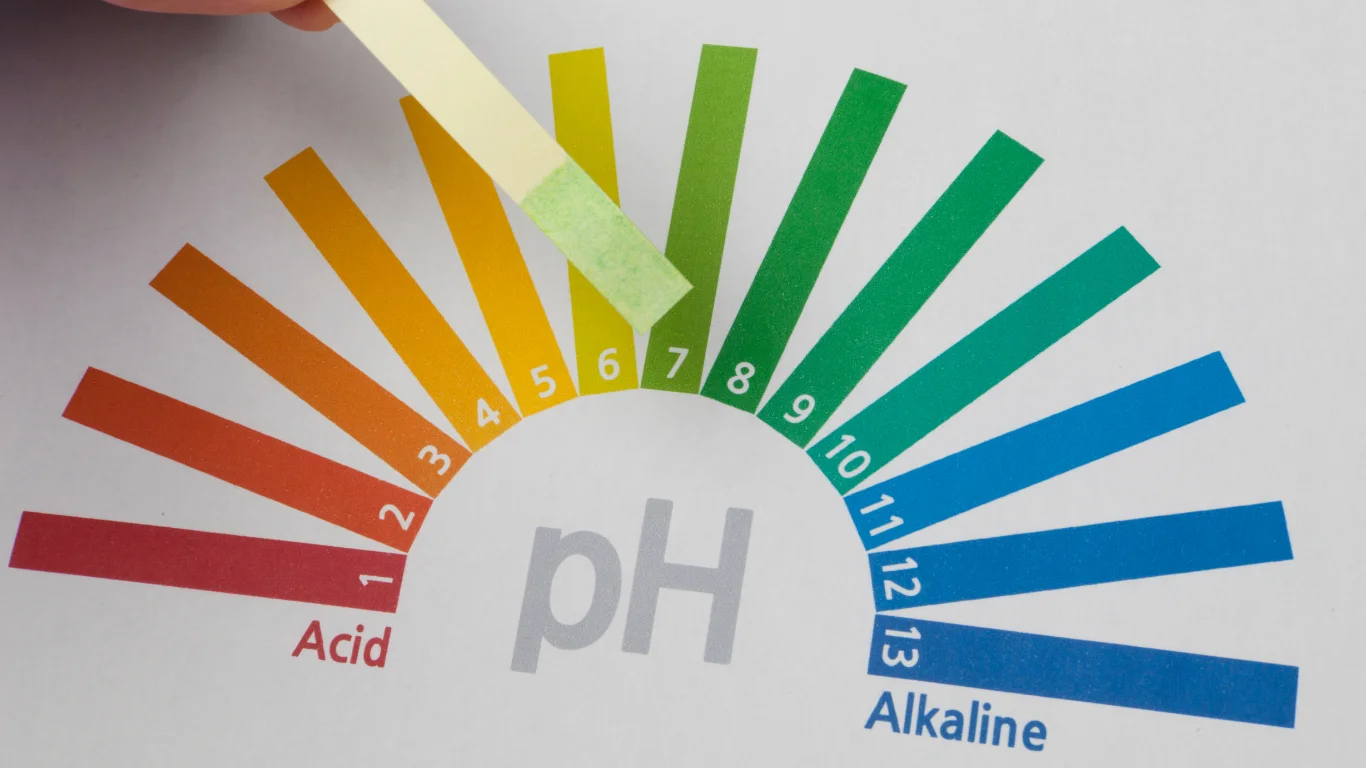Understanding soil pH is essential for farmers, as it directly affects soil fertility, plant health, and overall crop development. Soil pH measures how acidic or alkaline the soil is, on a scale from 0 to 14, with seven being neutral. Soils with a pH below 7 are acidic, while those above 7 are alkaline. In Mediterranean regions like Greece, most soils range from 6 to 8, depending on the parent material, climate, and cultivation practices.
Soil pH and nutrient availability
The soil’s pH directly affects the availability of nutrients for plants. In acidic soils (pH below 7), problems such as aluminum and manganese toxicity may occur, along with deficiencies in magnesium, calcium, and phosphorus. In alkaline soils (pH above 7), iron, manganese, copper, zinc, and phosphorus often become less available—causing chlorosis and reduced photosynthesis. Proper pH management is therefore crucial for optimal plant nutrition.
Soil buffering capacity
A soil’s ability to resist changes in pH is called its buffering capacity. This property depends largely on organic matter content and clay type. Soils with higher organic matter or greater cation exchange capacity (CEC) are generally more stable and less likely to experience sharp pH fluctuations after fertilization or irrigation.
Managing soil pH
Managing soil pH is a fundamental aspect of soil fertility. In acidic soils, liming is a common practice used to raise pH levels, creating a more favorable environment for plant growth. The amount of lime required depends on the soil’s buffering capacity and the target pH for each crop.
In alkaline soils, adding elemental sulfur or sulfate-based compounds helps gradually lower the pH.
Applying organic matter, such as compost or green manure, can further stabilize pH and promote microbial activity, reducing variations caused by fertilization or irrigation.
For practical guidance on how to balance pH in alkaline soils, read our related article: “Alkaline soil pH correction: 4+1 proven methods.”
Factors affecting soil pH
Soil pH depends on the composition of the parent material, climate, and management practices. In wetter climates, soil tends to be more acidic due to the leaching of bases and erosion. In drier regions, soils are often neutral or alkaline because carbonates accumulate at the surface. Long-term use of ammonium fertilizers or alkaline irrigation water can also alter soil pH, which is why regular soil testing is highly recommended.
Microbial activity
Soil pH influences microbial activity, which in turn affects soil health and nutrient cycling.
Beneficial microorganisms, such as nitrifying bacteria, thrive best in slightly acidic to neutral soils (pH 6–7). Outside this range, microbial activity declines, slowing down nitrogen mineralization and reducing nutrient availability to plants.
Importance of crop selection
Each crop has its own optimal pH range for healthy growth. For instance, blueberries and azaleas prefer acidic soils, while alfalfa and cereals perform better in neutral to slightly alkaline soils. Understanding these preferences enables farmers to select suitable crops and adjust soil conditions to achieve maximum yields.
Practical implications
For farmers, monitoring and managing soil pH is vital to maintaining soil health and plant productivity. An unbalanced pH can lead to weak plants, lower yields, and increased vulnerability to pests and diseases. It’s advisable to conduct annual soil testing, especially before planting or seeding, to detect any changes and apply the necessary corrections.
Acids and bases in agriculture
Acids and bases play an essential role in agriculture—not only in regulating soil pH but also in fertilizer production. For example, nitric acid is used to produce ammonium nitrate, one of the most widely used nitrogen fertilizers. At the same time, organic acids produced by soil microbes naturally help maintain pH balance in the root zone.
Conclusion
Soil pH is a key factor in sustainable agriculture. It affects nutrient availability, microbial activity, and the overall quality and fertility of the soil. Regular monitoring and appropriate management practices are essential to maintaining the ideal soil conditions for each crop type—ensuring healthy growth, balanced nutrition, and long-term productivity.

